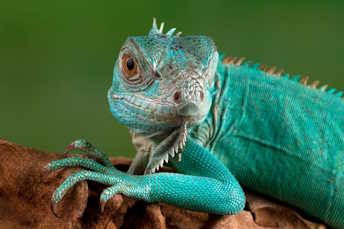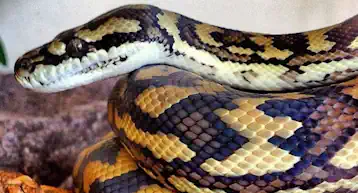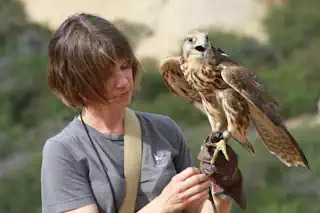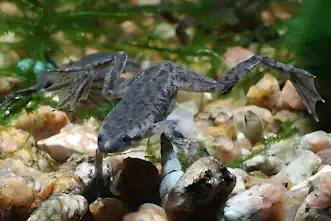Training Mice, Rats, Guinea Pigs, and Rabbits: A Beginners Guide
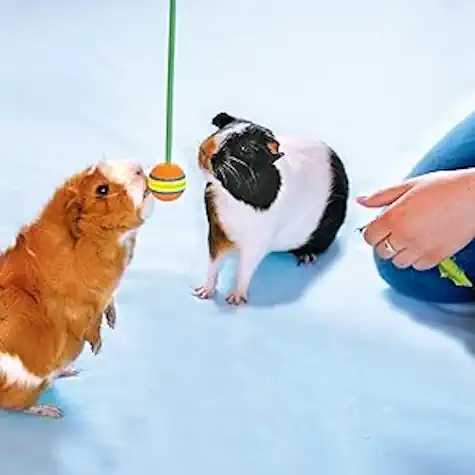
Hey there, small animal lovers! Are you ready to take your bond with your furry friends to the next level? Training your pet mice, rats, guinea pigs, or rabbits can be a fun and rewarding experience for both you and your pets. Not only does it provide mental stimulation and enrichment, but it also strengthens your relationship and makes daily care routines easier. Some consider these guys to be rodents and pests but with a little time, they can be wonderful loving pets.
Understanding Your Pet Mice, Rats, Guinea Pigs, and Rabbits
Before you start the training adventure, it’s crucial to spend time getting to know each of your little companions. Remember, each one is an individual with its quirks, preferences, and ways of communicating.
The Top 5 Behaviors Every Small Animal Owner Should Know
Understanding your adorable pals isn’t just about recognizing when they’re hungry or need some cuddle time. Here are the top 5 behaviors you’ll definitely want to get familiar with:
Hiding or Hoarding Food: This is a common behavior, especially in small rodents. It’s their natural instinct kicking in, so don’t worry. Just make sure their hiding spots are safe and clean. Be careful to not over feed. An empty dish does not always mean an empty belly. They will eat when they are hungry and hide the rest.
Teeth Grinding or Chattering: This can mean different things depending on the context. Sometimes it’s a sign of contentment, but it can also indicate discomfort or pain. Learning to differentiate the sound is key.
Nipping or Biting: While it might take you by surprise, this often means they’re either scared, trying to assert dominance, or just want to be left alone. It’s important to respect their space and learn to read these signs. A bite is a sure sign your pet is not ready for what you are trying to do. This is the same as with larger pets like dogs and cats.
Sudden Jumping or “Popcorning”: Seen mostly in guinea pigs and young rabbits, this burst of energy is a joy to watch and a clear sign they’re happy and healthy.
Burrowing or Digging: This behavior is common and indicates a need for security or simply the joy of playing. Ensure they have a safe, enriching environment that allows them to exhibit these natural behaviors.
By tuning into these behaviors and understanding what they mean, you’ll deepen the bond with your little ones, ensuring they’re not just physically healthy but happy and emotionally fulfilled too.
Behavioral Characteristics of Mice, Rats, Guinea Pigs, and Rabbits
Each of these enchanting small animals has unique characteristics that make them special. By understanding these traits, you’ll be better equipped to train and bond with them.
Mice
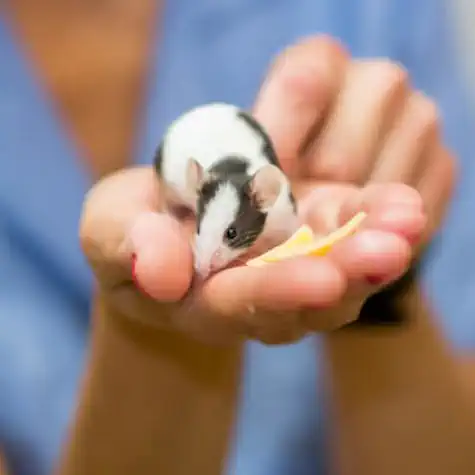
Mice are incredibly curious and intelligent, making them quick learners. They thrive on social interaction and enjoy engaging in play. Mice also communicate through high-pitched squeaks, which can express excitement or distress. Their love for exploration can be utilized in training sessions by creating stimulating obstacle courses.
The Best Mice Species for Pets
Mice are fascinating, little creatures with personalities as varied as their colors and breeds. While many types of mice can make wonderful companions, here are some of the favorites that are known for their friendly nature and captivating personas:
Fancy Mice: These are the most common choice for pets due to their docile nature and wide variety of colors and coat types. They’re very social and love interaction, making them perfect for those looking to form a deep bond with their pet.
Zebra Mice: Known for their striking striped pattern, Zebra mice are active and entertaining to watch. They can be a bit more independent than fancy mice but still make for incredibly interesting companions.
Harvest Mice: The smallest of pet mice, Harvest mice are known for their incredible agility and love for climbing. They’re a bit shy but absolutely enchanting once they warm up to you.
Spiny Mice: Distinguished by their spiky fur, Spiny mice are quite hardy and have a curious and adventurous spirit. They’re less common but can be a unique addition to the right home.
Rats
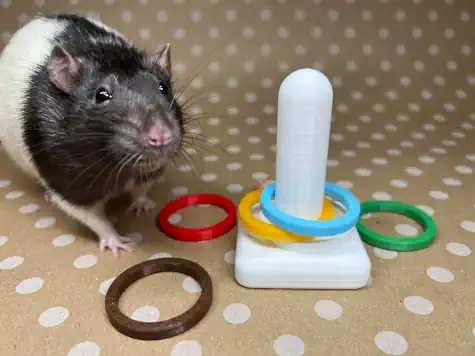
Rats are known for their strong emotional intelligence and ability to form deep bonds with their owners. They’re highly sociable and love to be part of the family. Rats are also very clever, able to solve complex puzzles, which makes trick training a great activity for them. Their ability to remember pathways and sequences can be surprising!
There are many species of rats. House rat, roof rat, black rat, norway rat, brown rat, ship rat, just to name a few. Here’s a list of some of the best rat species that are known for their friendly and affectionate nature, perfect for those looking to add a little whiskered companion to their lives:
Fancy Rats: The most popular choice among pet owners, fancy rats are known for their docile temperament and adaptability to human companionship. They come in a variety of colors and coat types, making them not only great pets but also a pleasure to watch and interact with.
Dumbo Rats: With their distinctive large, low-set ears, Dumbo rats charm their way into the hearts of many. They are exceptionally gentle and calm, making them fantastic pets, especially for families with children.
Rex Rats: Characterized by their curly fur and whiskers, Rex rats are as adorable as they are friendly. Their unique coat adds an extra layer of charm to their already lovable personality.
Hairless Rats: Despite their lack of fur, hairless rats are warm and cuddly pets that enjoy snuggling up to their human friends for warmth and affection. Their unique appearance and loving nature make them a special pet for those who love something a bit different.
Siamese Rats: Known for their striking coloration that resembles Siamese cats, Siamese rats are not just beautiful – they are also very sociable and intelligent, making them excellent companions for those looking for an interactive pet experience.
Guinea Pigs
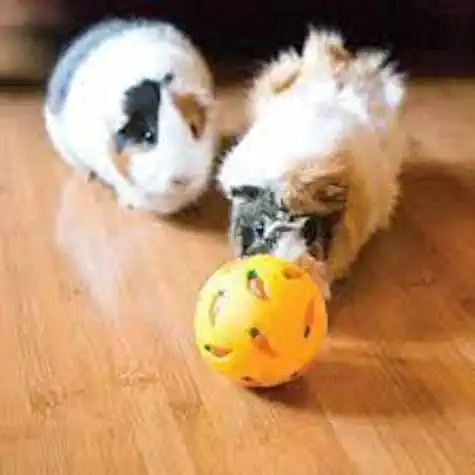
These fluffy bundles of joy are known for their vocalizations, using various sounds to communicate with their owners and fellow guinea pigs. They’re generally gentle creatures but can be shy and require time to build trust. Once comfortable, they show great affection and enjoy being held and petted. Watching them “popcorn” when happy is an absolute delight. For those considering these cuddly companions, here are some of the best species of guinea pigs that are known for being great pets:
American Guinea Pigs: Known for their short, smooth coat and friendly disposition, American guinea pigs are one of the most popular choices for pets. They are easy to care for and very social, making them perfect for first-time guinea pig owners.
Abyssinian Guinea Pigs: Distinguished by their unique coat, which consists of rosettes or swirls, Abyssinian guinea pigs are spirited and playful. Their lively personalities make them entertaining pets, but they may require a bit more grooming.
Peruvian Guinea Pigs: Famous for their long, luxurious hair, Peruvian guinea pigs are truly beautiful creatures. They are calm and make great pets, but keep in mind that their coat needs frequent grooming to prevent matting.
Silkie Guinea Pigs: Similar to the Peruvian but with hair that grows back from the face rather than all around, Silkies are known for their calm demeanor and are very gentle, making them excellent cuddle buddies.
Teddy Guinea Pigs: Characterized by their dense, plush coat that resembles the fur of a teddy bear, Teddy guinea pigs are not only adorable but also very friendly and easy to handle.
Rex Guinea Pigs: With their short, curly coat and rotund body, Rex guinea pigs are charming pets with a great temperament. They are hardy and, like the Teddy, have a coat that is easier to maintain.
Rabbits
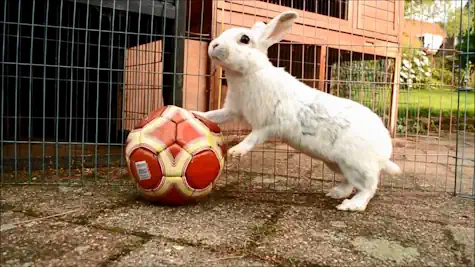
Rabbits are expressive animals with a strong need for social interaction, either with their human family or rabbit companions. They communicate their feelings through body language, like binkying when happy or thumping when scared. Rabbits need plenty of space to hop around and exercise, as they’re naturally active and enjoy exploring their environment. For those thinking about welcoming one into their home, here are some of the best rabbit breeds known for their friendly and affable nature:
Netherland Dwarf Rabbits: These tiny bundles of joy have a big personality packed into a small body. They’re known for their playful nature and can be quite affectionate with their owners.
Lionhead Rabbits: With their distinctive mane-like fur around their heads, Lionhead rabbits are not only charming in appearance but also have a friendly and outgoing nature.
Holland Lop Rabbits: Famous for their floppy ears and compact size, Holland Lops are very docile and make great pets for families with children. They tend to form strong bonds with their owners.
Mini Lop Rabbits: Slightly larger than the Holland Lop, Mini Lops are equally friendly and easygoing. Their playful antics and cuddly nature make them a favorite among rabbit enthusiasts.
Rex Rabbits: Known for their unique, velvety fur, Rex rabbits are incredibly gentle and calm. They’re perfect for those who value tranquility and companionship.
Flemish Giant Rabbits: Despite their large size, Flemish Giants are known as gentle giants and are remarkably docile and patient. They’re great companions who also enjoy a good cuddle.
English Angora Rabbits: With their fluffy coats and serene disposition, English Angoras require regular grooming but reward their owners with loyalty and affection.
Getting to know these behaviors will not only help you in training but also ensure your adorable friends feel understood and loved. Observing them in their environment, learning what foods they go crazy for, and understanding their unique body language will not only help in training but also deepen the bond you share. Love, patience, and a bit of creativity go a long way in creating a happy and harmonious living situation for you and your adorable friends. Remember, patience and consistency are key.
Training Basics
First things first, let’s talk about the basics. Here are some foundational steps to get you started on this exciting training adventure:
Start with the Basics: Begin with simple commands like ‘come’ or ‘sit’. Use a consistent cue for each command.
Be Patient and Positive: Remember, every pet learns at their own pace. Offer plenty of encouragement and love along the way.
Use Their Favorite Treats: Rewards are your secret weapon. Find out which treats get tails wagging (or noses twitching) the most.
Keep Training Sessions Short and Sweet: Animals have short attention spans. Aim for 5-10 minute sessions to keep them engaged and learning.
Consistency is Key: Try to train at the same time each day. This helps set a routine, making it easier for your pet to remember and follow through.
End on a High Note: Finish each training session with a success, no matter how small, to keep morale high.
Remember, training is not just about teaching new tricks; it’s an opportunity to deepen your relationship with your adorable companion. Happy training!
Training Specifics
Now, let’s dive into specific training techniques for each type of small animal:
Mice and Rats
Litter Training: Place a small litter box in a corner of their cage and reward them with treats whenever they use it.
Clicker Training: Use a clicker to mark the exact moment your mouse or rat performs the desired behavior, then immediately reward them with a treat.
Teaching Tricks: Start with simple tricks like standing up or spinning, using a treat as a lure to guide their movements.
Seeking: For their small size they have an amazing sense of smell and can easily be taught to seek for objects or treats.
Guinea Pigs
Leash Training: Gradually introduce your guinea pig to a harness and leash, allowing them to get comfortable before attempting short walks.
Socialization: Spend time interacting with your guinea pig each day, offering gentle pets and hand-feeding to build trust.
Rabbits
Litter Training: Similar to mice and rats, provide a litter box and reward your rabbit for using it.
Clicker Training: Use clicker training to teach your rabbit basic commands like “come” or “stay.”
Teaching Tricks: Rabbits can learn a variety of tricks, such as jumping through hoops or playing fetch with small toys.
Remember, every animal is unique and may learn at a different pace. Be patient and celebrate even the smallest successes. If you’re struggling with a particular training goal, don’t hesitate to seek guidance from a professional animal trainer.
Signs It’s Time to End a Training Session
Training should be enjoyable for both you and your pet. However, it’s crucial to recognize when your little friend is no longer interested or is too tired to continue. Here are some behaviors to watch for that suggest your small animal is done for the day:
Loss of Interest: They seem distracted or are ignoring commands they usually follow.
Signs of Frustration: Exhibiting signs of stress or discomfort such as pacing, nibbling on the cage bars, or excessive grooming.
Decreased Energy: Your pet appears tired, is lying down more than usual, or has stopped participating actively.
Vocalizations: Making sounds of distress or annoyance that you’ve learned to recognize as signs of displeasure or disinterest.
Avoidance Behavior: Actively moving away from you or the training props.
Reduced Treat Interest: Shows little to no interest in treats that they typically find irresistible.
When you notice these signs, it’s best to end the session positively, with a treat or some gentle petting, and try again later. Recognizing and respecting these signals helps maintain a positive training experience and prevents overexertion or stress in your pet.
Small mammals have their own challenges like respiratory issues, but all in all they are great pets, especially for young teens who need to learn about pet care and responsibility. They tend to have shorter life spans so when your teen moves on you are not left with a pet mouse for years into the future. They are also very affordable in comparison to many other popular pets. Training also tends to fit the attention span of a teenager a bit better than other pets.
Wrapping Up Our Training Journey
As we bring our training guide to a close, it’s important to reflect on the beautiful bond that training can cultivate between you humans and your small animal friends. Remember, the essence of training lies not just in teaching commands or tricks but in understanding and strengthening the unique connection you share with your pets.
It’s about mutual respect, patience, and celebrating the small victories together. Whether it’s a successful group litter training session or mastering a new trick, each step forward is a testament to your dedication and love for your furry companions.
Training is a continuous learning process for both you and your pets. It’s filled with moments of pure joy, occasional challenges, and an abundance of learning opportunities. By following the guidelines and tips we’ve discussed, you’re well on your way to creating a harmonious and nurturing environment for your beloved pets.
Remember to approach each training session with a warm heart, an open mind, and a pocket full of their favorite treats. Here’s to countless happy and rewarding moments with your adorable little companions. Happy training!
Frequently Asked Questions (FAQs)
How long does it usually take for a small animal to learn a new command or trick?
The time it takes for a small animal to learn a new command or trick can vary widely, depending on the animal’s species, age, and individual learning capabilities. On average, basic training like litter training can take a few days to a week, while more complex tricks may take longer. Patience and consistency are key.
What should I do if my pet seems uninterested in training?
If your pet seems uninterested in training, try to switch up the rewards, make sure you’re training in a distraction-free environment, and keep sessions short and engaging. Sometimes, just a break or training at a different time of day can make a big difference.
Can older animals learn new tricks, or is it better to start when they’re young?
While young animals may learn quicker due to their developing brains, older animals are also capable of learning new tricks and behaviors. It’s never too late to start training; just be patient and adjust your expectations according to your pet’s learning pace. Even a well trained pets will take time to adjust to being your new pets.
How can I make training sessions more engaging for my pet?
To make training sessions more engaging, use high-value treats, play with your pet before and after sessions, and try to incorporate training into everyday activities. Mixing up the tricks and commands can also keep your pet interested and excited to learn. Sometimes using treats as different diets can help ensure your pets get the nutrients they need. Things like Vitamin C are sometimes easier to add to their diet when given as a treat.
What should I do if my pet gets frustrated during training?
If your pet shows signs of frustration, it’s a good indication to take a break or possibly even end the training session for the day. Always end on a positive note, with a simple command they know or some gentle playtime, to avoid negative associations with training. Stress in small animals can lead to disease and their tolerance to fight diseases is not the same as larger pets.
